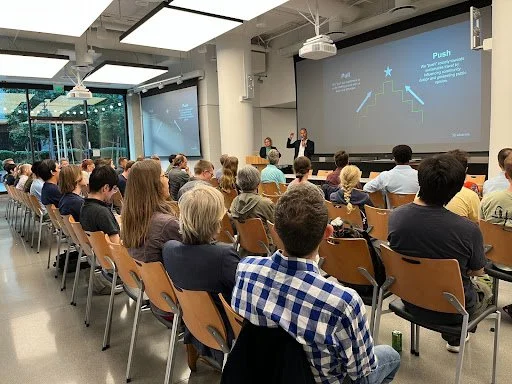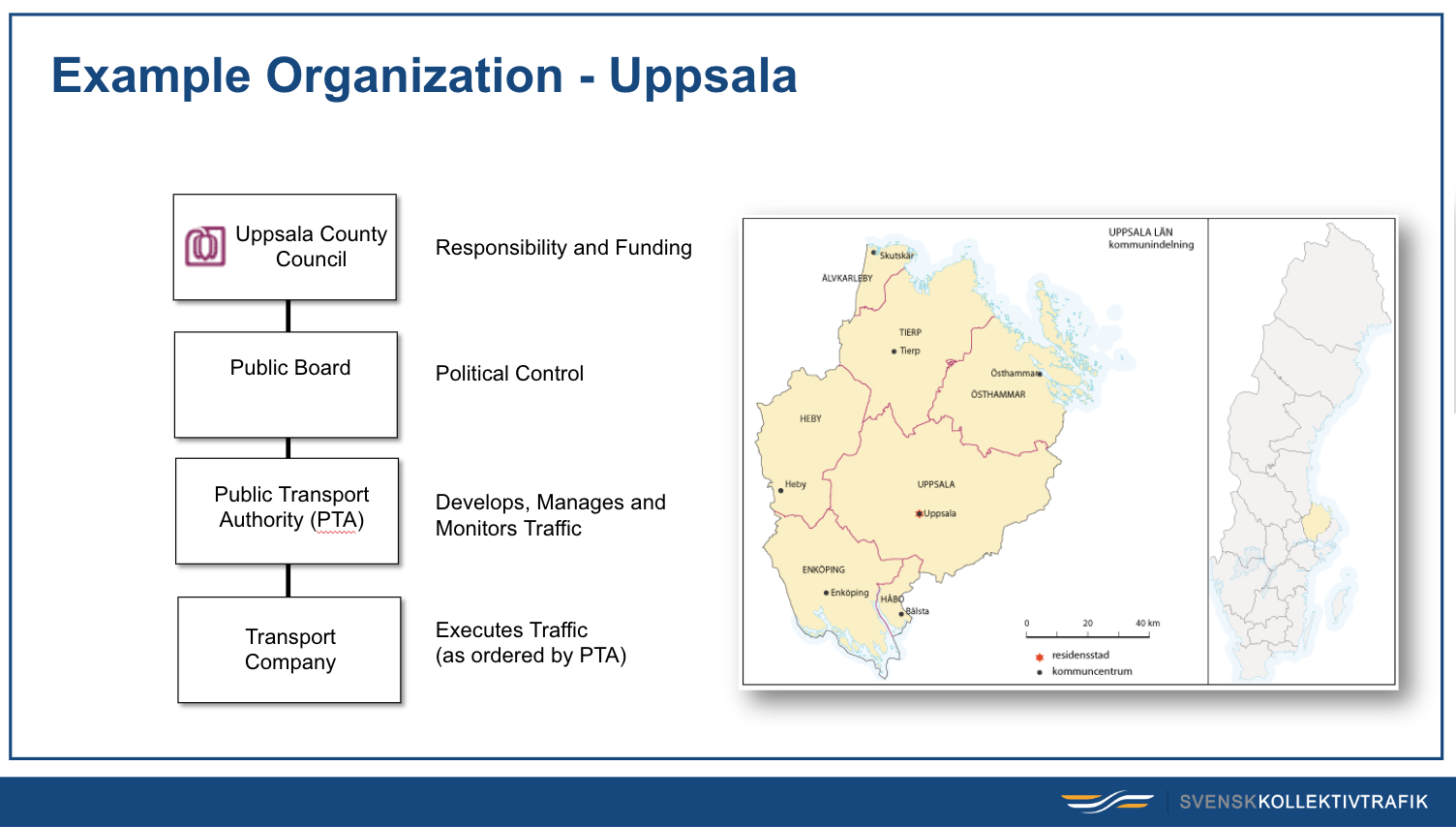Lessons from Sweden: Regional “Public Transport Authorities” are key to success
Local public transportation in Stockholm, Sweden’s capital and largest city.
Visiting senior officials from Sweden’s Gothenburg region present to a packed room at the Sept 11 public event organized by Seamless Bay Area, What can California learn from Sweden's world class public transit?, at the Bay Area Metro Center in San Francisco.
Sweden, a country of approximately 10 million that is bigger in area than the state of California, has succeeded in significantly increasing public transit ridership over the past several decades thanks in part to strong, empowered regional institutions, called “Public Transport Authorities” (PTAs), which plan and manage coordinated public transportation networks within each of Sweden’s 19 regions.
This was one of the key learnings from a recent event hosted by Seamless Bay Area on September 11, 2023 in San Francisco, which included presentations from visiting senior leaders from Sweden’s largest public transit agencies and the president of Sweden’s Association of public transit operators. A recording of the event is available here (apologies for suboptimal audio quality).
Public transit use in Sweden has increased significantly over the past several decades. As of 2019, public transit made up 19.3% of all trips in Sweden (up from 15.8% in 2000), compared to about 5% in the Bay Area. As a share of all vehicular trips in Sweden, public transit increased from 24% in 2010 to 32% in 2019. Since the pandemic, ridership recovery has been stronger than in the Bay Area, with Stockholm, Sweden’s largest region, reporting 80% of pre-pandemic ridership levels, compared to 60% in the Bay Area.
What explains Sweden’s success? Visiting Swedish executives cited the reorganization of public transportation into regional units, a shift that occurred in the 1970s, shifting responsibility for public transit from local municipalities upward to the regional governments, as a critical step in supporting the planning and implementation of high quality, integrated, seamless networks. Swedish counties - which are larger than Bay Area counties and generally cover entire metropolitan regions - each operate a PTA, governed by a political board made up of a subset of the county council elected officials. PTA as network managers for each county, and are responsible for:
Identifying the long term mobility vision and plan for entire county
Developing and planning travel opportunities and service concepts
Procurement and contract management with transport operators to run service according to county plans and standards
Ticket sales and distribution
Customer centers and customer service
Organizational relationship between county governments (regions), Public Transport Authorities (PTAs), and transport companies, using the example of the Uppsala region.
The Transport Act of 2010, a national law, further stipulated that PTAs must follow a competitive procurement process to award service contracts. As a result, dozens of private and publicly-owned companies, like Hong Kong’s MTR, Germany’s Deutsche Bahn, and many domestic companies, operate rail, bus, and ferry services in Sweden. The companies conform to the rules and policies set out in service contracts by PTAs, including integrated fare policies, wayfinding and branding standards, and quality of service standards.
Officials cited the ability for PTAs to determine the overall service offering for transit at a metropolitan level as essential to Sweden’s success. They noted that between Swedish regions, the travel experience remains somewhat fragmented, and the national government does not play as significant a role. However, because 90% of travel occurs within regions, which are all relatively large, they expressed that getting the regional level integrated was most essential. For example the region of Västra Götaland, the county of Sweden’s second largest city, Gothenburg, covers 9,700 square miles, an area larger than the 9-county San Francisco Bay Area (about 7,000 square miles). Within the region, there is one fare policy, integrated service, a common brand “Västrafik”, common mapping and wayfinding - yet many different transport companies run bus and train service.
Strategic vision map of Västra Götaland region identifying major hubs and transport routes.
Like most European regions, fares play a significant role in financing a high quality system, making up 45% of agency revenues.
The Swedish executives were visiting California as part of a strategic initiative to develop a future-oriented vision for public transportation in Sweden, given the rapid pace of technological change in the mobility sector and the disruption of the Covid-19 pandemic. The initiative was led by K2, The Swedish Knowledge Center for Public Transport. With California being a global center of major mobility startups and experimentation, particularly in micro mobility, on-demand shared mobility, and autonomous vehicles, K2 worked with Seamless Bay Area to organize the Sweden California CoLab, a three day knowledge exchange between Swedish and California leaders. Participating California agencies included Caltrans, California State Transportation Authority (CalSTA), California Public Utilities Commission (CPUC), Federal Transportation Administration (FTA), Metropolitan Transportation Commission (MTC), Contra Costa Transportation Authority (CCTA), and the Cities of San Francisco and San Jose. In organizing this knowledge exchange, and a prior conference in 2022 focused on learning transit best practices from Switzerland, SwissCal, Seamless Bay Area seeks to expand awareness of transit best practices among California public sector agencies.
The Swedish delegation and participating US-based transportation leaders expressed keen interest in keeping the Sweden-California partnership going, particularly given the recent momentum to strategically rethink public transit in California. Sweden’s effective governance structure of PTAs provides yet another model to consider as the Bay Area seeks to introduce reforms that can deliver seamless, integrated transit to the public as part of building the case for more funding in a future regional transportation measure.
View the full recording of the September 11th event here:





